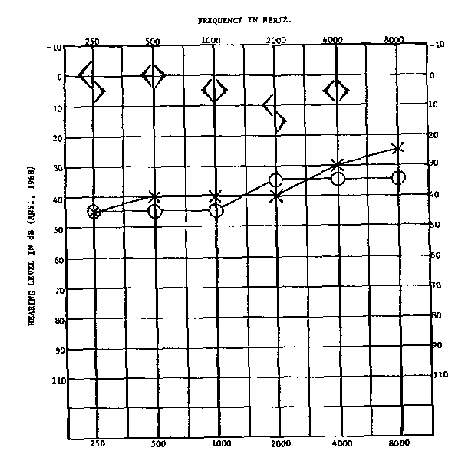The basic aim of a hearing test is to see how hearing ability varies with frequency. A rough idea can be found with tuning forks of various frequencies. If hearing is poor in a particular frequency range, then a tuning fork with frequency in that range would need to be brought closer to the ear before it can be heard.
For a complete diagnosis an audiogram is required. An audiogram tests many more frequencies and tests for both air and bone conduction. A comparison between these two can pinpoint possible hearing problems. To conduct an audiogram the patient is placed in a soundproof room and the intensity of the quietest sounds that can be heard at a given frequency are recorded. The test is repeated for a wide range of frequencies for each ear.
Air conduction is tested using microphones. At any given frequency sounds of varying intensity are fed into the ear and the threshold of hearing established. This process is repeated for different frequencies and both ears.
Bone conduction is tested by placing a vibrator on the bone behind the ear. Vibrations pass through the bones and tissues of the skull to the cochlea, bypassing the outer and middle ear.

